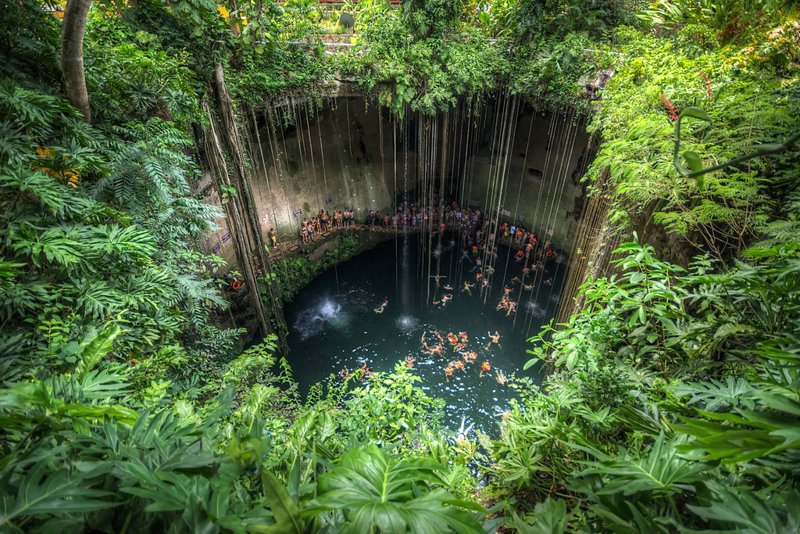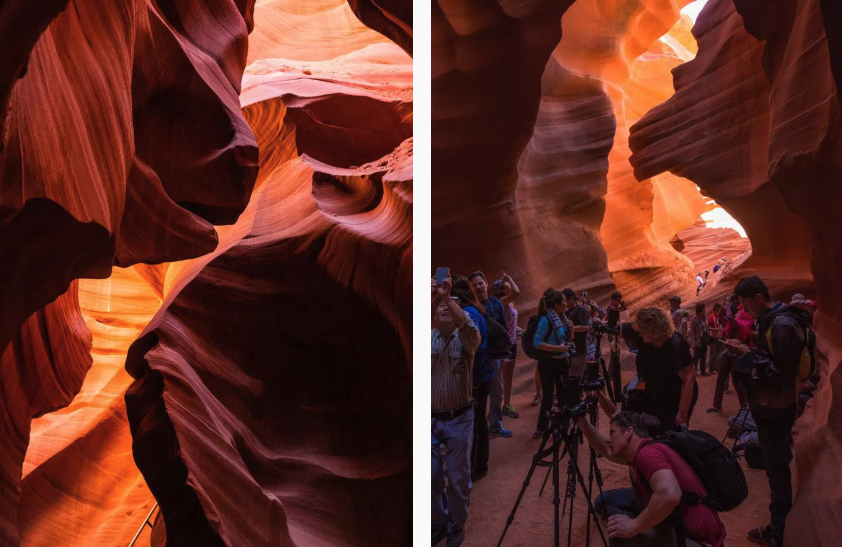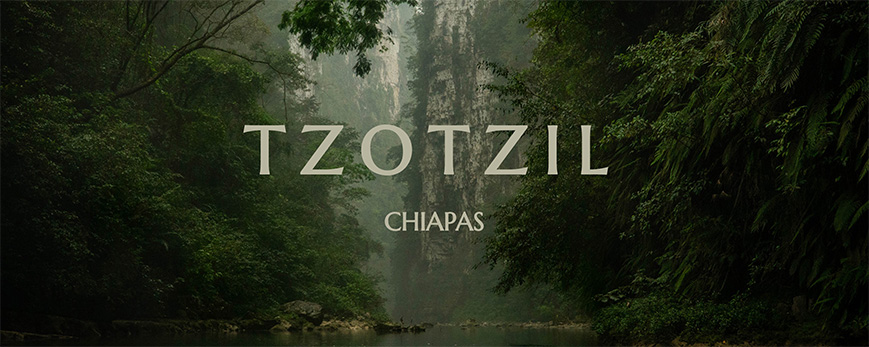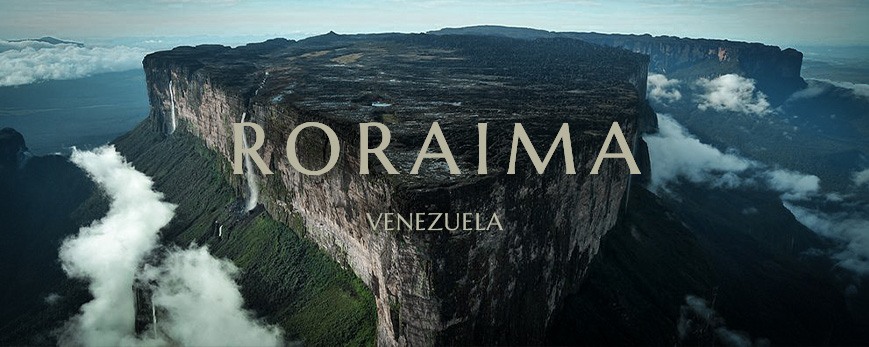Keeping Remote Places Wild: Why Secrecy Is Key To Sustainability
Overtourism is eroding the world’s most fragile landscapes. Discover why keeping remote places wild—and sometimes secret—is the most powerful way to protect ecosystems, cultures, and authentic travel experiences.
NAHUA EXPEDITIONS
23 Aug 2025 ・ 6 min read

In a hyper-connected digital age, location tags on social media platforms can turn a hidden paradise into a congested tourist trap. Once these delicate, remote landscapes are exposed, overtourism often sneaks in—bringing with it environmental degradation, overwhelmed local communities, and the loss of cultural nuance.
This article explores why keeping some destinations secret is often the most powerful tool for preserving and safeguarding these fragile landscapes.
Keeping a place quiet is louder and more powerful than any conservation campaign.
Why Remote Places Matter
Ecological Integrity & Biodiversity
Remote natural areas often serve as bastions of pristine ecosystems. Disturbing them can threaten species, disrupt natural processes, and cascade into ecosystem degradation. Science has shown that once an ecosystem crosses a tipping point, recovery can take decades—if it happens at all.
Ecosystems unravel faster than they can ever be repaired; what we protect today becomes tomorrow’s legacy.
Climate Resilience
Wild landscapes—forests, grasslands, rivers—play a pivotal role in storing carbon, regulating local climates, and buffering extreme weather. Preserving them isn’t only good for local biodiversity—it’s good for global climate stability.
Cultural Value
Remote landscapes are not just wilderness—they are often living cultural landscapes. For local communities—mountains, rivers, and canyons may hold spiritual meaning, shape traditions, or provide identity and belonging. When mass tourism arrives, these cultural values can be diluted, commodified, or sidelined in favour of economic gain.
True sustainability means recognizing that communities have the right to decide how (or if) their lands are shared with outsiders. Some may welcome tourism; others may see guiding in dangerous zones as intrusive, risky, or incompatible with their way of life. Respecting local peoples choices—rather than pressuring participation—ensures that cultural integrity remains intact alongside environmental preservation.
Respecting a community’s choice not to commodify their home is as vital as respecting the terrain beneath their feet.
This is why we believe it’s so important to approach tourism in a low-impact, quality over quantity manner, and provide economic opportunities—not exclusive to tourism—for local communities to benefit from.
The Hidden Threats to Rising Tourism Spots
Overtourism & Infrastructure Strain
When locations go viral, the visitor influx often exceeds local infrastructure capacity. In Tulum, for instance, the archaeological site saw 2.2 million visitors in 2017, making it Mexico’s third most-visited site, and far overwhelming local capacity for tourism. Machu Picchu, Mount Everest, and Boracay in the Philippines are all major examples of attractions with overwhelmed tourist capacity. (MDPI)

Environmental Degradation & Development Pressure
Emerging tourism demand often triggers low-quality “quantity tourism”—cheap lodging, overcrowded tours, pollution, even logging and construction to service the mass numbers of tourists. In many instances, development causes environmental damage and the displacement of locals, with little economic benefit for them in return. (Be A Better Traveler, Kevin Ryan)
Social and Cultural Erosion
Machu Picchu faces these pressures, drawing millions of visitors annually to a site never designed for such scale. With daily entry once exceeding 5,000 tourists, trails and terraces have suffered wear, while nearby towns have been reshaped almost entirely around the tourism economy. UNESCO has repeatedly warned that uncontrolled visitation could place the site on its endangered list, forcing Peru to impose stricter limits on daily entries and reroute visitor flow to preserve both the ruins and the cultural fabric of surrounding communities.
Similarly on Mount Everest, the surge in climbers has not only endangered lives on the mountain but permanently reshaped Sherpa culture. The seasonal influx of expeditions pulls many away from traditional livelihoods, funnelling them into high-risk guiding work where injury or death is not uncommon. Villages grow increasingly dependent on this dangerous tourism economy, while cultural practices and community rhythms are disrupted by the demands of serving a global mountaineering industry. Nepal now faces growing calls to limit permits—not only to protect climbers and the environment, but to reduce the cultural strain on the Sherpa people whose lives have been irrevocably altered by Everest’s fame.

Restraining access is not exclusion; it’s preservation in action.
Global Biodiversity Impact & Cumulative Pressure
A 2025 study tracking 155 regions from 2001–2019 found that international tourism significantly elevates biodiversity risks—effects that persist and accumulate over time. Policies and funding can help, but only if they’re thoughtfully and adequately applied—something that remote regions struggle with deeply.
The Social Media Effect & Call for Restraint
As The Observer (published in The Guardian) recently put it: once-popular places like Mount Everest, Venice, and Maya Bay are now buckling under the weight of global attention, stranded between commercialism and waste-strewn premises. Sometimes, the planet’s hotspots are just better left unvisited—or at least untagged. (The Guardian)

A Subtle Strategy: Keep Some Places Wild
Protecting vulnerable places isn’t about exclusion—it’s about stewardship and preservation. Protecting fragile landscapes requires thoughtful limits that ensure they remain intact for future generations.
Secrecy isn’t hiding—it’s safeguarding, so that wilderness can remain wilderness.
Invisible Gatekeeping:
Avoid specific geo-tagging or publicly naming remote locales. Preserving a sense of anonymity shields them from mass influx and protects ecosystems that cannot handle heavy visitation.
Smart Visitor Dispersion:
Encourage travellers towards a spread of destinations rather than funnelling everyone to a single hotspot. Supporting lesser-known regions eases pressure while sharing economic benefit more widely.
Controlled Access & Reservations:
Introducing quotas, timed entries, or permit systems in delicate areas reduce the impact of over-tourism. Limiting the numbers of visitors protects both safety and serenity while keeping trails and habitats from degradation under unsustainable use. Whilst the outdoors in general should be inclusive, not every destination or natural attraction in the world has the capacity to be.
Economic Regulation
Implementing taxes, daily fees, or conservation levies that channel revenue directly back into protection. By aligning the cost of entry with the value of preservation, overtouristed zones can reclaim balance and sustainability.
Every overexposed place risks losing the quiet traditions that made it worth visiting.
Practical Steps for Responsible Travellers
⒈ Choose Operators Who Don’t Flaunt Locations Of Underprepared Regions
Seek out travel with companies that value discretion, cultural respect and sustainable impact. Travel with operators who have a track record of inserting funds back into the communities through real conservation work, operators who’s approach is quality over quantity tourism and who don’t promote or contribute to fast-tourism.
⒉ Avoid Geo-Tagging Sensitive Sites
Refrain from posting the exact names or map locations of fragile places online. What feels like harmless sharing can rapidly draw unsustainable crowds to areas unprepared for heavy visitation. By keeping locations vague, travellers help protect ecosystems from being trampled and give communities space to decide how, or if, they want to engage with tourism.

⒊ Support Low-Impact Access
When visiting remote places, prioritize tours and guides that limit group sizes and minimise environmental strain. Ask about infrastructure impact, how the local community benefits, and what safety measures are in place. Choosing operators who cap visitor numbers ensures the experience remains sustainable, protects wildlife, and preserves the tranquillity of the location for future travellers.
⒋ Share Values, Not Destinations
Focus on sharing the lessons, experiences, and personal insights gained from your travels rather than revealing the exact location of a hidden gem. By emphasizing values—such as respect for nature, cultural sensitivity, and responsible exploration—you can inspire others to travel thoughtfully without putting fragile ecosystems or communities at risk. This approach keeps special places protected while still encouraging meaningful connection and learning.
Keeping places quiet means rivers run clear, trails stay wild, and wildlife stays unbothered.
Why This Matters—for You and the Wild
Visiting a remote, extraordinary place and choosing not to broadcast its location online is more than discretion—it is a conscious act of stewardship. In a world where online publicity can reach millions overnight, unchecked tourist traffic can overwhelm delicate landscapes and lead directly to their degradation.
In contrast, by keeping these places under the radar, you help to:
Preserve ecosystems
Protect habitats from erosion, pollution, and disruption, allowing wildlife to thrive undisturbed.
Respect local communities
Honour the choices of people who live and work near these areas, letting them maintain cultural practices without being overwhelmed by tourism.
To honor a place we travel to, is to honor the people who call it home — Let's keep that at the forefront of our travel goals.
Relish the experience
Enjoy the thrill and serenity of unspoiled landscapes without crowds or artificial spectacle. The encounter feels more authentic, more personal, and ultimately more memorable.
Support sustainable exploration and encourage responsible operators
Reward companies and guides who invest in preservation, and who reinforce a culture of ethical adventure, by choosing to travel with them. Promote travel that prioritizes quality, care, and longevity over profiting on a regions name.
Ultimately, true preservation sometimes means leaving nature untagged. Finding a place worth sharing, and choosing to keep the name silent instead—is the most impactful form of preservation. Choosing secrecy in this way transforms the act of travel from mere consumption into a meaningful contribution to conservation and cultural experience. It is a quiet, powerful form of advocacy—one that leaves a lasting imprint on both the environment and the traveller.
What to Take Away
In urging you to keep secret what’s sacred, we’re not advocating elitism—we’re inviting responsibility. Let’s travel with humility, resist the urge to broadcast the location of every discovery, and celebrate the beauty of the wild as it thrives best—quietly and respectfully.
What's Next?
At Nahua Expeditions, we believe exploration and protection must go hand in hand. Our trips to remote corners of the world are crafted to safeguard the very aspects that make them extraordinary. Our journeys are built with care, keeping emphasis on uplifting the local communities that determine the future of these untamed regions. If this is the kind of travel you’re looking for, then you’re at the right place.
Stay Safe & Be Prepared: The information provided in this article is for general informational purposes only. Outdoor recreation involves inherent risks, and individuals are fully responsible for their own safety. Nahua Expeditions and its authors disclaim any liability arising directly or indirectly from the use of the information from this article.
Keeping Remote Places Wild: Why Secrecy Is Key To Sustainability
Overtourism is eroding the world’s most fragile landscapes. Discover why keeping remote places wild—and sometimes secret—is the most powerful way to protect ecosystems, cultures, and authentic travel experiences.
23 AUG 2025 ・ 6 min read
Nahua Expeditions

In a hyper-connected digital age, location tags on social media platforms can turn a hidden paradise into a congested tourist trap. Once these delicate, remote landscapes are exposed, overtourism often sneaks in—bringing with it environmental degradation, overwhelmed local communities, and the loss of cultural nuance.
This article explores why keeping some destinations secret is often the most powerful tool for preserving and safeguarding these fragile landscapes.
Keeping a place quiet is louder and more powerful than any conservation campaign.
Why Remote Places Matter
Ecological Integrity & Biodiversity
Remote natural areas often serve as bastions of pristine ecosystems. Disturbing them can threaten species, disrupt natural processes, and cascade into ecosystem degradation. Science has shown that once an ecosystem crosses a tipping point, recovery can take decades—if it happens at all.
Ecosystems unravel faster than they can ever be repaired; what we protect today becomes tomorrow’s legacy.
Climate Resilience
Wild landscapes—forests, grasslands, rivers—play a pivotal role in storing carbon, regulating local climates, and buffering extreme weather. Preserving them isn’t only good for local biodiversity—it’s good for global climate stability.
Cultural Value
Remote landscapes are not just wilderness—they are often living cultural landscapes. For local communities—mountains, rivers, and canyons may hold spiritual meaning, shape traditions, or provide identity and belonging. When mass tourism arrives, these cultural values can be diluted, commodified, or sidelined in favour of economic gain.
True sustainability means recognizing that communities have the right to decide how (or if) their lands are shared with outsiders. Some may welcome tourism; others may see guiding in dangerous zones as intrusive, risky, or incompatible with their way of life. Respecting local peoples choices—rather than pressuring participation—ensures that cultural integrity remains intact alongside environmental preservation.
Respecting a community’s choice not to commodify their home is as vital as respecting the terrain beneath their feet.
This is why we believe it’s so important to approach tourism in a low-impact, quality over quantity manner, and provide economic opportunities—not exclusive to tourism—for local communities to benefit from.
The Hidden Threats to Rising Tourism Spots
Overtourism & Infrastructure Strain
When locations go viral, the visitor influx often exceeds local infrastructure capacity. In Tulum, for instance, the archaeological site saw 2.2 million visitors in 2017, making it Mexico’s third most-visited site, and far overwhelming local capacity for tourism. Machu Picchu, Mount Everest, and Boracay in the Philippines are all major examples of attractions with overwhelmed tourist capacity. (MDPI)

Environmental Degradation & Development Pressure
Emerging tourism demand often triggers low-quality “quantity tourism”—cheap lodging, overcrowded tours, pollution, even logging and construction to service the mass numbers of tourists. In many instances, development causes environmental damage and the displacement of locals, with little economic benefit for them in return. (Be A Better Traveler, Kevin Ryan)
Social and Cultural Erosion
Machu Picchu faces these pressures, drawing millions of visitors annually to a site never designed for such scale. With daily entry once exceeding 5,000 tourists, trails and terraces have suffered wear, while nearby towns have been reshaped almost entirely around the tourism economy. UNESCO has repeatedly warned that uncontrolled visitation could place the site on its endangered list, forcing Peru to impose stricter limits on daily entries and reroute visitor flow to preserve both the ruins and the cultural fabric of surrounding communities.
Similarly on Mount Everest, the surge in climbers has not only endangered lives on the mountain but permanently reshaped Sherpa culture. The seasonal influx of expeditions pulls many away from traditional livelihoods, funnelling them into high-risk guiding work where injury or death is not uncommon. Villages grow increasingly dependent on this dangerous tourism economy, while cultural practices and community rhythms are disrupted by the demands of serving a global mountaineering industry. Nepal now faces growing calls to limit permits—not only to protect climbers and the environment, but to reduce the cultural strain on the Sherpa people whose lives have been irrevocably altered by Everest’s fame.

Restraining access is not exclusion; it’s preservation in action.
Global Biodiversity Impact & Cumulative Pressure
A 2025 study tracking 155 regions from 2001–2019 found that international tourism significantly elevates biodiversity risks—effects that persist and accumulate over time. Policies and funding can help, but only if they’re thoughtfully and adequately applied—something that remote regions struggle with deeply.
Global Biodiversity Impact & Cumulative Pressure
As The Observer (published in The Guardian) recently put it: once-popular places like Mount Everest, Venice, and Maya Bay are now buckling under the weight of global attention, stranded between commercialism and waste-strewn premises. Sometimes, the planet’s hotspots are just better left unvisited—or at least untagged. (The Guardian)

A Subtle Strategy: Keep Some Places Wild
Protecting vulnerable places isn’t about exclusion—it’s about stewardship and preservation. Protecting fragile landscapes requires thoughtful limits that ensure they remain intact for future generations.
Secrecy isn’t hiding—it’s safeguarding, so that wilderness can remain wilderness.
Invisible Gatekeeping
Avoid specific geo-tagging or publicly naming remote locales. Preserving a sense of anonymity shields them from mass influx and protects ecosystems that cannot handle heavy visitation.
Smart Visitor Dispersion
Encourage travellers towards a spread of destinations rather than funnelling everyone to a single hotspot. Supporting lesser-known regions eases pressure while sharing economic benefit more widely.
Controlled Access & Reservations
Introducing quotas, timed entries, or permit systems in delicate areas reduce the impact of over-tourism. Limiting the numbers of visitors protects both safety and serenity while keeping trails and habitats from degradation under unsustainable use. Whilst the outdoors in general should be inclusive, not every destination or natural attraction in the world has the capacity to be.
Economic Regulation
Implementing taxes, daily fees, or conservation levies that channel revenue directly back into protection. By aligning the cost of entry with the value of preservation, overtouristed zones can reclaim balance and sustainability.
Every overexposed place risks losing the quiet traditions that made it worth visiting.
Practical Steps for Responsible Travellers
⒈ Choose Operators Who Don’t Flaunt Locations Of Underprepared Regions
Seek out travel with companies that value discretion, cultural respect and sustainable impact. Travel with operators who have a track record of inserting funds back into the communities through real conservation work, operators who’s approach is quality over quantity tourism and who don’t promote or contribute to fast-tourism.
⒉ Avoid Geo-Tagging Sensitive Sites
Refrain from posting the exact names or map locations of fragile places online. What feels like harmless sharing can rapidly draw unsustainable crowds to areas unprepared for heavy visitation. By keeping locations vague, travellers help protect ecosystems from being trampled and give communities space to decide how, or if, they want to engage with tourism.

⒊ Support Low-Impact Access
When visiting remote places, prioritize tours and guides that limit group sizes and minimise environmental strain. Ask about infrastructure impact, how the local community benefits, and what safety measures are in place. Choosing operators who cap visitor numbers ensures the experience remains sustainable, protects wildlife, and preserves the tranquillity of the location for future travellers.
⒋ Share Values, Not Destinations
Focus on sharing the lessons, experiences, and personal insights gained from your travels rather than revealing the exact location of a hidden gem. By emphasizing values—such as respect for nature, cultural sensitivity, and responsible exploration—you can inspire others to travel thoughtfully without putting fragile ecosystems or communities at risk. This approach keeps special places protected while still encouraging meaningful connection and learning.
Keeping places quiet means rivers run clear, trails stay wild, and wildlife stays unbothered.
Why This Matters—for You and the Wild
Visiting a remote, extraordinary place and choosing not to broadcast its location online is more than discretion—it is a conscious act of stewardship. In a world where online publicity can reach millions overnight, unchecked tourist traffic can overwhelm delicate landscapes and lead directly to their degradation.
In contrast, by keeping these places under the radar, you help to:
Preserve ecosystems
Protect habitats from erosion, pollution, and disruption, allowing wildlife to thrive undisturbed.
Respect local communities
Honour the choices of people who live and work near these areas, letting them maintain cultural practices without being overwhelmed by tourism.
To honor a place we travel to, is to honor the people who call it home — Let's keep that at the forefront of our travel goals.
Relish the experience
Enjoy the thrill and serenity of unspoiled landscapes without crowds or artificial spectacle. The encounter feels more authentic, more personal, and ultimately more memorable.
Support sustainable exploration and encourage responsible operators
Reward companies and guides who invest in preservation, and who reinforce a culture of ethical adventure, by choosing to travel with them. Promote travel that prioritizes quality, care, and longevity over profiting on a regions name.
Ultimately, true preservation sometimes means leaving nature untagged. Finding a place worth sharing, and choosing to keep the name silent instead—is the most impactful form of preservation. Choosing secrecy in this way transforms the act of travel from mere consumption into a meaningful contribution to conservation and cultural experience. It is a quiet, powerful form of advocacy—one that leaves a lasting imprint on both the environment and the traveller.
What to Take Away
In urging you to keep secret what’s sacred, we’re not advocating elitism—we’re inviting responsibility. Let’s travel with humility, resist the urge to broadcast the location of every discovery, and celebrate the beauty of the wild as it thrives best—quietly and respectfully.
What's Next?
At Nahua Expeditions, we believe exploration and protection must go hand in hand. Our trips to remote corners of the world are crafted to safeguard the very aspects that make them extraordinary. Our journeys are built with care, keeping emphasis on uplifting the local communities that determine the future of these untamed regions. If this is the kind of travel you’re looking for, then you’re at the right place.




